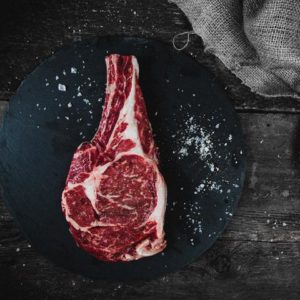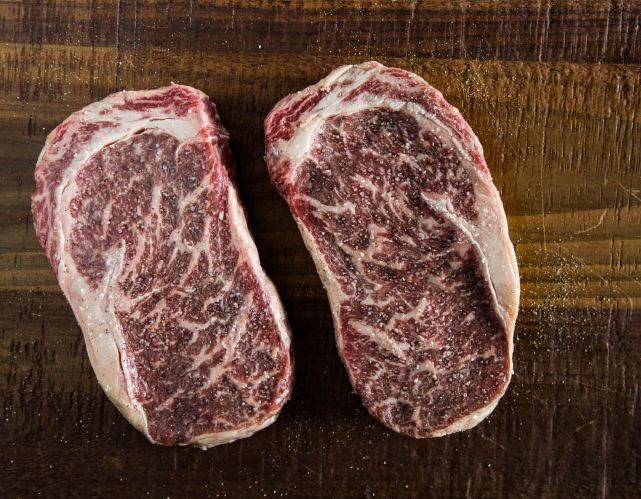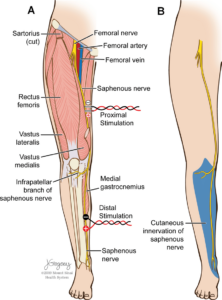Dr Alex Ritza – Your Downtown Toronto Chiropractor
CHIROPRACTIC CARE CONVENIENTLY LOCATED NEAR YONGE AND BLOOR
RATED ONE OF TORONTO’S BEST CHIROPRACTORS ONLINE
Let’s get the big things out of the way first: Fats do not make you fat.
Oh yeah, and Cholesterol is required to be healthy.
And do not forget, Fat from good quality sources is required for your optimal health.
 These are the type of basic nutrition facts that go counter to almost everything we have been told growing up. We have been told to avoid fat if we want to lose weight and in some cases that you do not need to eat it at all.
These are the type of basic nutrition facts that go counter to almost everything we have been told growing up. We have been told to avoid fat if we want to lose weight and in some cases that you do not need to eat it at all.
Contrary to what you might think, consuming a fundamental percentage of healthy fats in proportion to your requirements will not alone lead to weight gain. There are hundreds of factors ranging from the number of total calories you consume to the quality of your sleep and your activities levels that affect weight gain.
Just because fat contains more energy than protein or carbohydrates does not mean it will cause you to gain weight; unbalanced consumption of any macronutrient can lead to weight gain and a failure to meet the fundamental FUEL requirements of your body.
If you want to eat a little healthier in 2018, start by INCREASE YOUR INTAKE OF HEALTHY FATS.
Consume only unprocessed fats from whole foods. Fats produced from extensive processing like seed and grain oil should be avoided.
This is a Fundamental Fuel Strategy from our just relieved Fundamental Fuel Curriculum. It is one of 11 strategies that will help you achieve your health goals by delivering the nutrients your body actually requires based on evolution, biology and genetics. It is not a diet or doctrine from a guru!
We think that this is going to be an absolute gamechanger for your health so we have included an excerpt from our curriculum below that will explain a little more about the need for high-quality fats in the diet.
Cholesterol is required to be healthy.
Cholesterol is a really important molecule. It is required to help form the protective cell membrane around every cell in the body. It is supremely important in forming the protective wrapping around nerves cells, which is needed for proper nerve function, communication, and your Brain-Body Connection. It is needed for digestion in the gut and to help produce multiple hormones in the body including the ever-important estrogen and testosterone. And finally, the vitamins A, D, E and K that we consume can only be absorbed with its help.
While the body can make cholesterol, there is nothing wrong with consuming it as part of another nutrient dense food source. The body is one of the smartest things in the universe and it is easily able to adapt to cholesterol consumption by simply reducing its own production of this vital compound.
The problem with cholesterol is not its consumption but what happens when the body is seriously stressed or inflamed and the effect it has on the lipoprotein molecules that carry cholesterol around the bloodstream. Nutrition that promotes inflammation in the body, physical stress or significant emotional stress all creates an environment that can damage the cholesterol-containing molecule and promote arterial clogging. The risk that cholesterol poses for heart disease is based less on its presence and more on what is happening around it. Cholesterol is not “bad” or “good” – it is required to be healthy and the physiological conditions around it are to blame for any “health” consequences. It should be no surprise that research continues to indicate that low cholesterol intake is associated with higher mortality.
Fat from good quality sources is required for your optimal health.
Fat molecules are needed by every single cell in the body to function and express their optimal genetic potential. Fats are needed for some of the following functions:
- support metabolism
- cell signalling and reproduction
- the health of various body tissues
- immunity
- cancer prevention (it stops cells from multiplying on mass)
- nerve conduction and brain function (your brain is loaded with saturated fat)
- hormone production,
- the absorption of many nutrients
- lung function
The crazy thing about these three points is that the peer-reviewed literature has indicated this for almost a half century and our cultural eating habits are moving in the wrong direction.
“Low fat” products require sugar for caloric and flavour replacement in exchange for the fat.
In addition, the vast majority of fats that our society currently consume are highly processed and are not the type that helps our cells and tissues to function at their best. The relative abundance of fats that we consume is vital so it is important to review the types of fat that exist.
Saturated Fat V. Unsaturated fat
The difference between saturated and unsaturated fats lies in the bond structure.
Saturated fats, which come from meat products, coconut, palm and cacao oil, have a molecular structure that makes them solid at room temperature. They are stable at a broader temperature range in cooking and are good for preparing foods at high temperature during frying. While they like cholesterol are blamed for problems such as cardiovascular disease, the aim is sorely misdirected. They are fundamental for cellular function, are an excellent source of energy and excluding their consumption would negatively limit the nutritiously dense foods you could otherwise consume in moderation.
Unsaturated fats can be referred to as “mono” or “poly” unsaturated fats based on the number of kinks in their molecular structure: more kinks produce a less viscous liquid at room temperature.
Monounsaturated fats come from olive oil, avocados, peanuts & groundnuts, tree nuts (almonds, cashews, etc) and again, meat and coconuts.
Polyunsaturated fats, which are liquid at room temperature because of more kinks in their structure, and are an essential fat because they must be consumed in order to survive.
Polyunsaturated fats can be found in food sources such as fish and shellfish, flaxseed and its oil, hemp seed, olive oil, soya oil, canola, chia seeds, pumpkin seeds, sunflower seeds, leafy vegetables, and walnuts.
Not all polyunsaturated fats are created equal, however! There are three kinds of polyunsaturated fats that are named based on where the kink in their structure is and are referred to as omega 3, 6 and 9.
What is the important difference if any between them? Well, it all rests on what those omega acids are building blocks for. Omega 9 and omega 6 fatty acids are involved in chemical pathways in the body that lead to and produce inflammation, which is incredibly damaging to our health. Omega 3 acids follow a different metabolic pathway and are anti-inlammatory. As a result, research has shown that the body is best evolved and adapted to an omega 3:6 ratio of 1:1 or 1:2. This means you consume just as many omega 3 polyunsaturated fats as you do omega 6 polyunsaturated fats.
Omega 3 fatty acids that tend to be anti-inflammatory by nature, are found mostly in hemp, flax seed, and cold water fish like salmon, halibut, tuna and swordfish. While hemp and flax contain ten times as much omega 3 fatty acids as fish, our recommendation is to consume predominantly wild fish as your fatty acid source. The reason is that of the three different types of omega 3 fats, ALA, EPA and DHA, humans are terribly inefficient (as low as 5%!) at converting the plant-derived ALA into the DHA and EPA that the body uses.
The consequence of a poor omega 3:6 ratio is what we are seeing now in our modern lifestyle! Research indicates our modern low-fat diet, rich in plant-based oils that represent a major source of pro-inflammatory omega 6 fats, puts our omega 3:6 ratio at anywhere between 1:10 and 1:50. This is completely out of whack with what our body has evolved to function optimally at.
So remember,
Fat from animal sources, coconut oil, avocados, nuts, some seeds, olive oil, pastured butter and ghee should represent the majority of the fat you consume. And, an omega 3:6 ratio of 1:1 is the gold standard.
Dr. Alex





